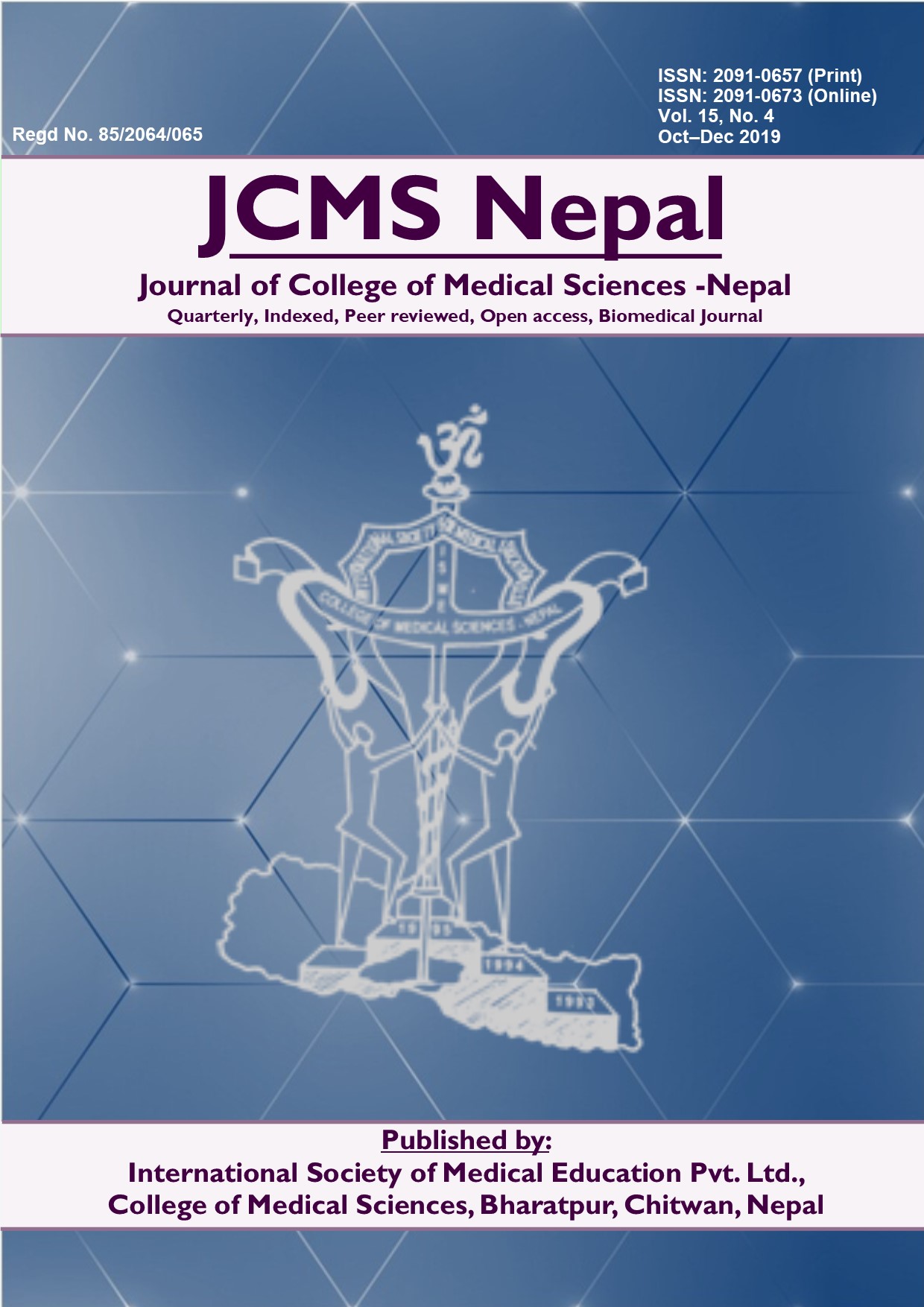Pattern of Cephalic Index among Medical Students of a Medical College of Eastern Nepal
DOI:
https://doi.org/10.3126/jcmsn.v15i4.25601Keywords:
Anthropometric, brachycephalic head, cephalic indexAbstract
Background: Cephalic index (CI) is one of the important anthropometric parameters to determine racial variation. Studies done in Nepal has made a comparison of cephalic index for castes (Tharu, Brahmin, Chhetri, Newar), races (Mongoloids and Aryans) but lacks sex variation. The objective of this study was to find the difference in the cephalic index between two genders and to find the sequence of most predominant to least common head type in different genders among the Medical Students of Birat Medical College & Teaching Hospital (BMCTH).
Methods: A cross-sectional study conducted in the department of Anatomy of BMCTH from 1 July 2019 to 1 September 2019 comprising of 256 medical students (133 male and 123 female) aged between 18 to 24 years. Head length, head breadth and cephalic index were the variables measured using standard devices and techniques. Ethical clearance was taken from the Institutional Review Committee (IRC) of Birat Medical College & Teaching Hospital, Nepal.
Results: The mean cephalic index in male and female is found to be 81.41 ± 4.52 and 83.62 ± 4.08 respectively. Statistically significant difference found between gender in terms of head length males (18.78±0.69) and females (17.71 ± 0.60); head breadth males (15.28 ±0.62) and females (14.79 ±0.57). The mean cephalic index in males is 81.41 ± 4.52 varying from 69.31 to 94.48. In females, the cephalic index varied from 74.74 to 93.14 and the mean cephalic index is 83.62 ± 4.08. The difference between male and female cephalic index is found to be statistically significant. Majority (43.75%) had Brachycephalic head (CI>79.9) followed by Hyperbrachycephalic (26.95%), Mesocephalic (25.39%), and Dolicocephalic (3.90%).
Conclusion: Cephalic index is significantly high in female as compared to male whereas head length and breadth are significantly high in males than females. It confirms sexual dimorphism exists. Brachycephalic is the commonest head type.
Downloads
Downloads
Published
How to Cite
Issue
Section
License
This license enables reusers to copy and distribute the material in any medium or format in unadapted form only, for noncommercial purposes only, and only so long as attribution is given to the creator.




